
Although the cure rate remains high in women who present with bulky mediastinal stage I–II HL, the challenge remains to balance efficacy and minimize long-term toxicities.

Your AI-Trained Oncology Knowledge Connection!


Although the cure rate remains high in women who present with bulky mediastinal stage I–II HL, the challenge remains to balance efficacy and minimize long-term toxicities.

The combination of bortezomib, lenalidomide, and dexamethasone resulted in a partial response or better in more than 60% of patients with relapsed or refractory multiple myeloma, according to results of a phase II trial.

Results of a large meta-analysis indicated that treatment with lenalidomide for newly diagnosed multiple myeloma was associated with an increased risk for developing secondary hematologic malignancies.

Contrary to some previous research as well as popular belief, living underneath or near to power lines as a child may not have any notable effect on childhood leukemia risk, according to a new case-control study conducted in the United Kingdom.

Researchers have identified distinct pre-leukemic hematopoietic stem cells (HSCs) in acute myeloid leukemia (AML) patients.
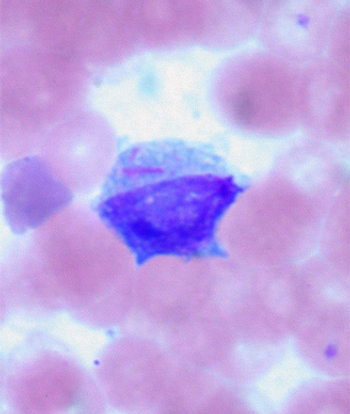
A score based on an epigenetic signature of hematopoietic stem cells (HSCs) is highly prognostic for patients with acute myeloid leukemia (AML), according to a new study.

The FDA has approved ibrutinib (Imbruvica) as a single-agent treatment for previously treated patients with chronic lymphocytic leukemia (CLL), under the FDA’s accelerated approval program.

Results from a phase I/II trial indicate that carfilzomib may be a safe and effective substitute for bortezomib in multiple myeloma patients whose disease progressed during treatment with a bortezomib-containing regimen.

More than one-third of African American patients with monoclonal gammopathy of undetermined significance or multiple myeloma were found to have an inherited risk factor for the disease, according to the results of a European study.
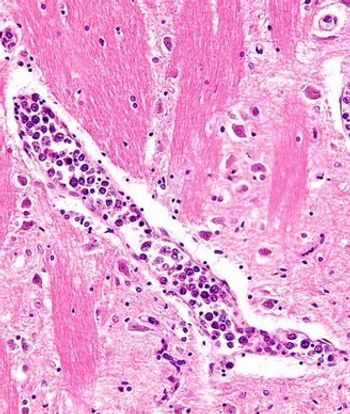
The combination of idelalisib with rituximab improved survival in relapsed CLL, and idelalisib also showed antitumor activity as a single agent in patients with indolent non-Hodgkin lymphoma.

Activating mutations in the beta-catenin gene in bone cells is shown to contribute to the development of acute myeloid leukemia.

After significant improvement in progression-free survival with ibrutinib over ofatumumab, an independent data monitoring board has recommended stopping a phase III trial involving patients with relapsed or refractory CLL or SLL.
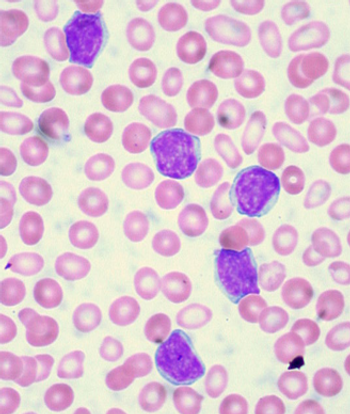
In a new study, combining the anti-CD20 antibody obinutuzumab with chlorambucil improved outcomes over rituximab and the same agent in chronic lymphocytic leukemia patients with coexisting conditions.

Most physicians are less aware of clinical presentations of the various heavy chain diseases, due in great part to their low incidence and highly variable clinical course. Heavy chain diseases are rare lymphoproliferative B-cell disorders whose hallmark is the accumulation and secretion of truncated constant heavy chains without the associated light chains.

In the absence of a clear understanding of the underlying biologic heterogeneity, the etiology of the different heavy chain diseases (HCDs) should be taken into consideration when treatment decisions are made. Extrapolation from related conditions, such as aggressive lymphomas (in γ-HCD) and CLL (in μ-HCD), suggests that novel and targeted therapies may be effective in the management of these rare diseases.
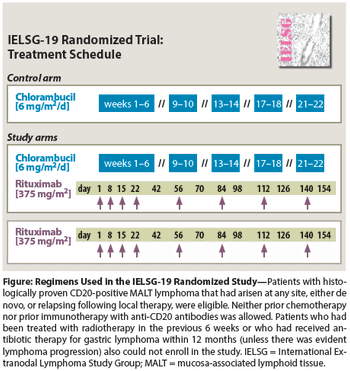
No definite guidelines exist for the management of nongastric MALT lymphoma. Retrospective series have included patients treated with different modalities, and excellent cause-specific and overall survival have been demonstrated, independent of the type of treatment adopted.
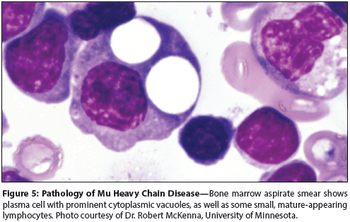
This review discusses the clinical presentation; epidemiology; laboratory, radiologic, and pathologic features; and treatment options for each of the heavy chain diseases, emphasising the importance of an accurate pathologic diagnosis and correct interpretation of immunologic studies in their identification.

Chronic myeloid leukemia (CML) patients with higher copayments for the tyrosine kinase inhibitor imatinib were more likely to discontinue the drug or be non-adherent, according to a new study.

The International Myeloma Working Group recently released a consensus statement updating recommendations for the management and treatment of patients with multiple myeloma who are not eligible for standard autologous stem-cell transplantation.
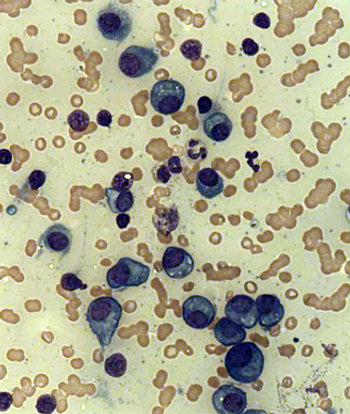
Two alternative multiple myeloma plasma cell surface markers have been identified and could be important for subclassification, prognostication, and treatment stratification of patients with multiple myeloma.
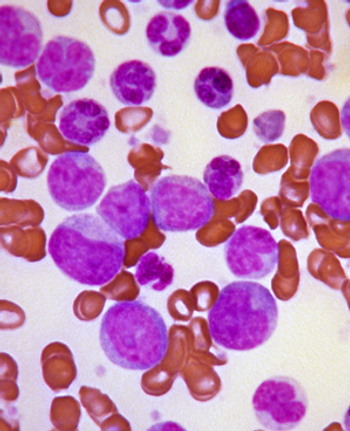
A deep molecular response to imatinib, achieved by most chronic myeloid leukemia patients who receive the drug, is predictive of better overall survival, according to a new study.
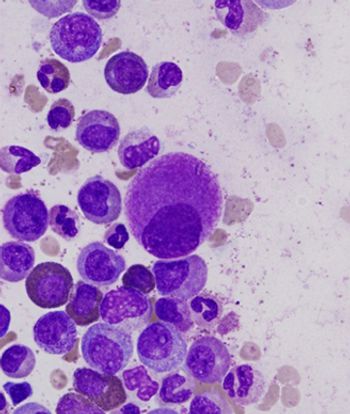
Modulation of the bone marrow microenvironment with parathyroid hormone may be a feasible way to dramatically reduce counts of leukemia stem cells in chronic myeloid leukemia patients, according to new research in mice.

Mesotheliomas that arise after patients receive radiation therapy for lymphoma have unusual histologic features, and those patients tend to be younger and tend to survive longer than more common asbestos-related mesothelioma patients.

A new phase II trial found that a regimen containing rituximab, gemcitabine, cyclophosphamide, vincristine, and prednisolone is active and reasonably safe in patients with diffuse large B-cell lymphoma and coexisting cardiac disease.

A study aimed at defining the natural history of breast implant-associated anaplastic large-cell lymphoma found that outcomes differ between those cases where the disease is confined within the fibrous capsule surrounding the implant and those where a mass is present in the breast.